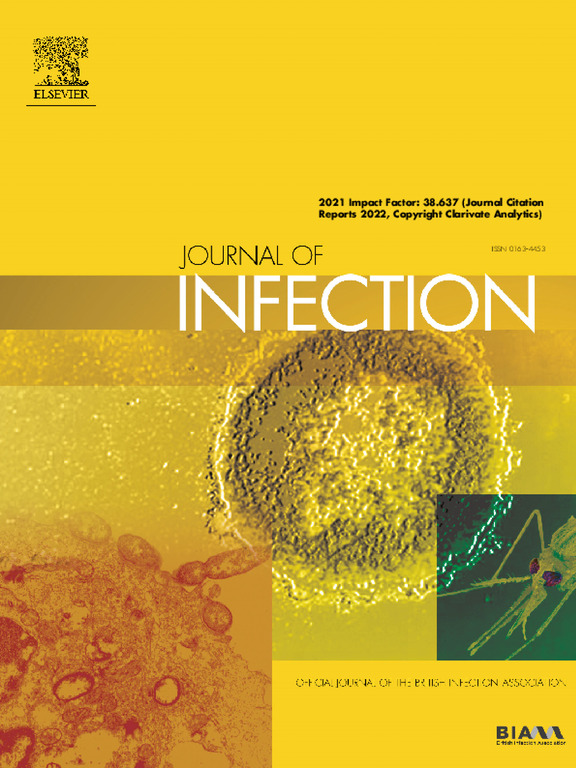Norovirus genomes detected from the Guillain–Barré syndrome (GBS) cases in a community outbreak in Pune, India, 2025
IF 11.9
1区 医学
Q1 INFECTIOUS DISEASES
引用次数: 0
Abstract
Background
In 2025, Pune, India, witnessed an unprecedented surge in Guillain–Barré Syndrome (GBS) cases, raising urgent public health concerns. GBS, a rare neurological condition often linked to infections, demanded immediate epidemiological and molecular scrutiny. Evidence from earlier studies points to infectious agents like Campylobacter jejuni, cytomegalovirus, and enteric viruses as common triggers. Environmental conditions and regional pathogen variations were considered potential contributors to the outbreak. To uncover the cause, a broad molecular screening was initiated to detect any known or emerging infectious agents.
Methods
A comprehensive molecular screening was conducted for 19 pathogens, including established GBS-linked and enteric pathogens. Advanced genomic techniques, including phylogenetic and mutation analysis, were employed to characterize the detected pathogens.
Findings
Two major pathogens, Campylobacter jejuni and Norovirus, were identified by using molecular methods. Whole-genome sequencing of 12 representative strains using a genotyping tool revealed their classification into genogroup II within three major genotypes: GII.16[P16] (n=9, GBS-associated), GII.17[P17] (n=2), and GII.4 Sydney[P16] (n=1). Phylogenetic analysis based on VP1 and RdRp genes confirmed genotyping and revealed that all norovirus strains from GBS patients clustered within a potential distinct Indian sub-lineage, closely related to strains reported from Russia, USA and Germany, suggesting possible global dissemination. The GII.17 strains belonged to the globally dominant Romania-2021-like lineage, while the GII.4 strain clustered with the pandemic Sydney[P16] variants. Mutation analysis revealed genotype-specific patterns. GII.17 strains had the highest number of non-synonymous mutations (>160), mostly in ORF1 (RdRp; RNA-dependent RNA polymerase), suggesting replication adaptation. In contrast, GBS-associated GII.16 strains showed increased mutations in ORF2 (VP1; major capsid protein), likely driven by immune selection pressures.
Interpretation
These findings highlight the importance of genomic surveillance to identify emerging norovirus lineages and their potential clinical significance. Continued monitoring is vital to understand norovirus evolution and its possible connection to GBS.
从2025年印度浦那社区暴发的格林-巴利综合征(GBS)病例中检测到诺如病毒基因组
背景:2025年,印度浦那出现了前所未有的格林-巴勒综合征(GBS)病例激增,引发了紧迫的公共卫生问题。GBS是一种罕见的神经系统疾病,通常与感染有关,需要立即进行流行病学和分子检查。早期研究的证据表明,像空肠弯曲杆菌、巨细胞病毒和肠道病毒这样的传染性病原体是常见的触发因素。环境条件和区域病原体变异被认为是导致暴发的潜在因素。为了找出病因,开展了广泛的分子筛选,以发现任何已知或新出现的传染因子。方法:对19种病原菌进行综合分子筛选,包括已确定的gbs相关病原菌和肠道病原菌。采用先进的基因组技术,包括系统发育和突变分析,对检测到的病原体进行了表征。结果:利用分子方法鉴定出两种主要病原菌空肠弯曲杆菌和诺如病毒。利用基因分型工具对12株代表性菌株进行全基因组测序,将其归为三种主要基因型:GII.16[P16] (n=9, gbs相关)、GII.17[P17] (n=2)和GII.4 Sydney[P16] (n=1)。基于VP1和RdRp基因的系统发育分析证实了基因分型,并显示来自GBS患者的所有诺如病毒毒株聚集在一个潜在的独特的印度亚谱系中,与来自俄罗斯、美国和德国的毒株密切相关,表明可能在全球传播。GII.17株属于全球占主导地位的罗马尼亚-2021样谱系,而GII.4株与大流行的悉尼变异聚集在一起[P16]。突变分析揭示了基因型特异性模式。GII.17菌株的非同义突变数量最多(bbb160),主要发生在ORF1 (RdRp; RNA依赖性RNA聚合酶)中,表明其具有复制适应性。相比之下,gbs相关的GII.16菌株显示ORF2 (VP1,主要衣壳蛋白)突变增加,可能是由免疫选择压力驱动的。解释:这些发现强调了基因组监测对鉴定新出现的诺如病毒谱系及其潜在临床意义的重要性。持续监测对于了解诺如病毒的进化及其与GBS的可能联系至关重要。资助:印度医学研究委员会-国家病毒学研究所,印度浦那(编号:559)。以2401年)。
本文章由计算机程序翻译,如有差异,请以英文原文为准。
求助全文
约1分钟内获得全文
求助全文
来源期刊

Journal of Infection
医学-传染病学
CiteScore
45.90
自引率
3.20%
发文量
475
审稿时长
16 days
期刊介绍:
The Journal of Infection publishes original papers on all aspects of infection - clinical, microbiological and epidemiological. The Journal seeks to bring together knowledge from all specialties involved in infection research and clinical practice, and present the best work in the ever-changing field of infection.
Each issue brings you Editorials that describe current or controversial topics of interest, high quality Reviews to keep you in touch with the latest developments in specific fields of interest, an Epidemiology section reporting studies in the hospital and the general community, and a lively correspondence section.
 求助内容:
求助内容: 应助结果提醒方式:
应助结果提醒方式:


